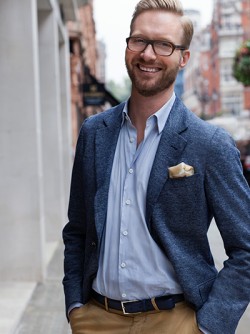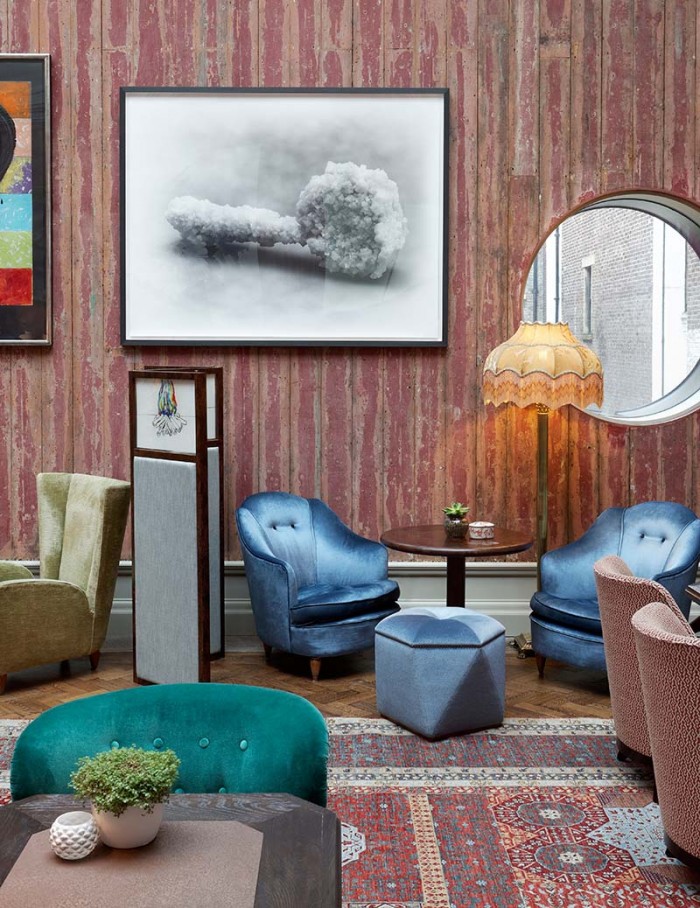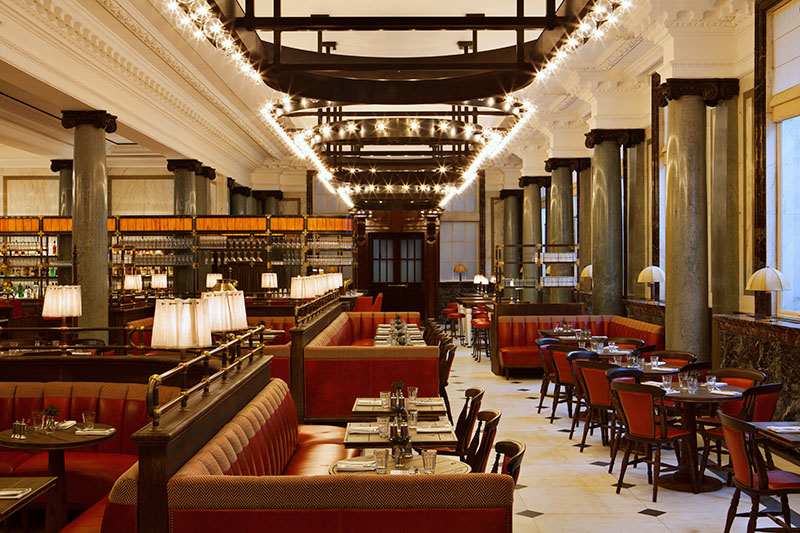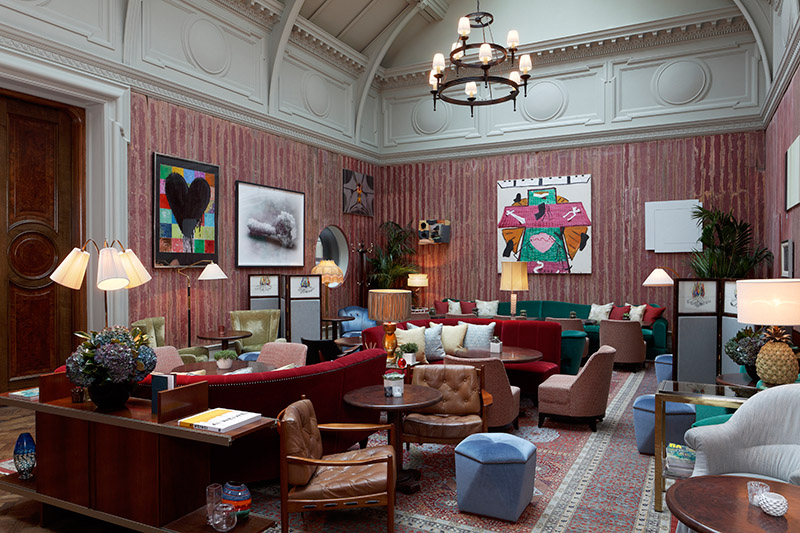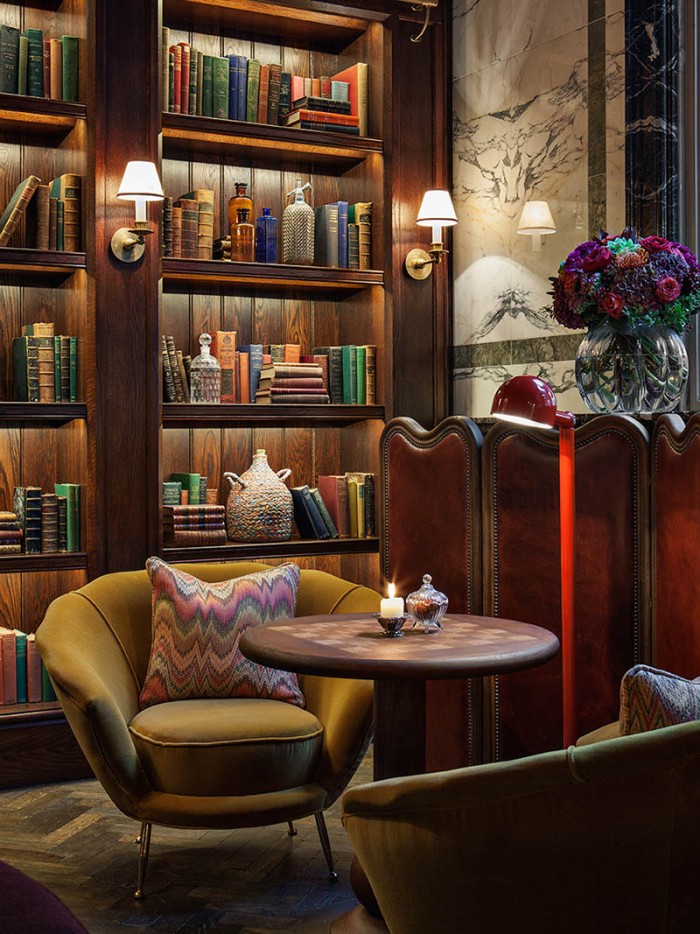Q&A with Martin Brudnizki, Martin Brudnizki Design Studio
Born in Stockholm, Martin Brudnizki is the founder of Martin Brudnizki Design Studio, an internationally renowned interior architecture and design studio founded in 2000 and based in London and New York. Primarily known for designing restaurants, private clubs and hotels, over the last decade his studio’s designs have been instrumental in redefining modern hospitality, with notable projects including work with Soho House, The Royal Academy of Arts and Caprice Holdings (The Ivy, Annabel’s, Scott’s).
Martin is listed within Debrett’s 500 Most Influential People in the UK, the London Evening Standard’s Power 1000, House and Garden’s Top 100 Leading Interior Designers and Wallpaper* Magazine’s Power 200; with the latter describing Martin as ‘one of the best restaurant and hotel designers of his generation’. In 2015 Martin established And Objects, a separate product design studio built on Martin’s experience in interior design. Recent collaborations include collections with Drummonds and The Urban Electric Co.
In terms of inspiration, where have the majority of your ideas come from? Would you say you are highly influenced by other designers? Or would you say it is more on the artistic level?
My influences are many fold. For instance I have always been inspired by Dorothy Draper who used the most amazing array of colours and patterns. Whilst on the other hand, I’ve be greatly influenced by modernists, for example the Scandinavian architects and designers Gunnar Asplund and Alvar Aalto; their use of lines and form is something I frequently like to reference in my work.
You have studios in both London and New York, what is the biggest difference between both studios in terms of client wants and needs? And does this differ from the rest of the world?
There is a crossover of ideas and concepts in London and New York, but when it comes to the visual language – I approach every project differently as each interior is unique to its surroundings and it has to make sense for that specific location. As well, the client is one of the most important aspects to any project; they are individuals and have individual needs that must be listened to.
“I approach every project differently as each interior is unique to its surroundings and it has to make sense for that specific location”
How have you seen the concept of a hotel develop from when you first started up the design studio in 2000 to now?
The hotel has once again become a social meeting place with standalone restaurants, bars etc. Hotels are becoming a place where locals and visitors can gather in mutual surroundings; it is now the main attraction. The Holborn Dining Room and Scarfes Bar exemplifies this idea, with both the restaurant and bar becoming destination places in their own rights, despite the fact they’re part of the Rosewood Hotel.
Your studio mainly works with high end Hotel design, could you see yourself designing other spaces in other sectors such as Office, Education etc?
I never say never! To me, an interior forms part of a lifestyle so whether it’s an office or space for education the interior will still have the same design focus; that of luxury and comfort. I don’t see why all aspects of your life can’t be beautifully designed, from the moment you wake up to the moment you sit down at your desk at work. An interior should inspire and encourage creativity. We recently designed The Academicians’ Room at The Royal Academy, a space for members to gather and relax. The room used to function as the hanging gallery for the Academicians so we took this context and transplanted it into a space that reflected the history and sense of academia.
“an interior forms part of a lifestyle so whether it’s an office or space for education the interior will still have the same design focus; that of luxury and comfort”
We noticed you have done some residential design? Do you see any influences from this sector in hotel? and vice versa?
I design spaces that reflect a person’s character and lifestyle so regardless of it being a hotel or residency, it will always perform that primary function of comfort and encourage the act of relaxation. More and more now there is a cross over between lifestyle and function, we all seek out pleasure regardless of our surroundings and so we will always be influenced by residential characteristics.
Lastly, any trend predictions that you see developing over the next 5 years?
Hotel design has become less standardised and more localised over the years at the same time the terms luxury and quality have become intertwined with lifestyle and experience. I believe this trend will continue to encapsulate the holistic hotel experience, in terms of what modern facilities and services we need in hotels that are perhaps specific to the location or a certain lifestyle. However I’m a firm believer in the importance of tradition and try and create interiors that have an enduring quality about them. To me this is the ultimate luxury, crafting an experience that will stand the test of time and combing the use of modern materials with the history and context of the space or surrounding area.
Visit: http://www.mbds.com/ for more information
Images by James McDonald
Portrait Image by Luca Marziale





